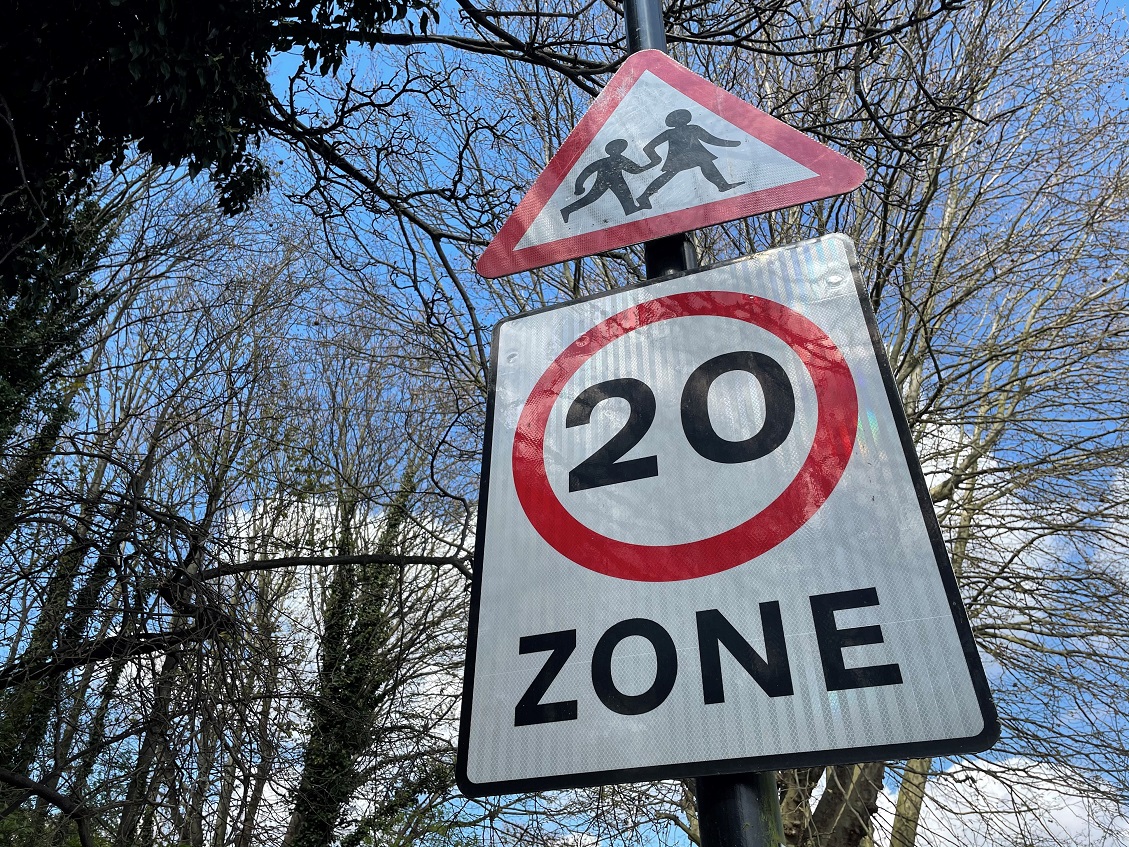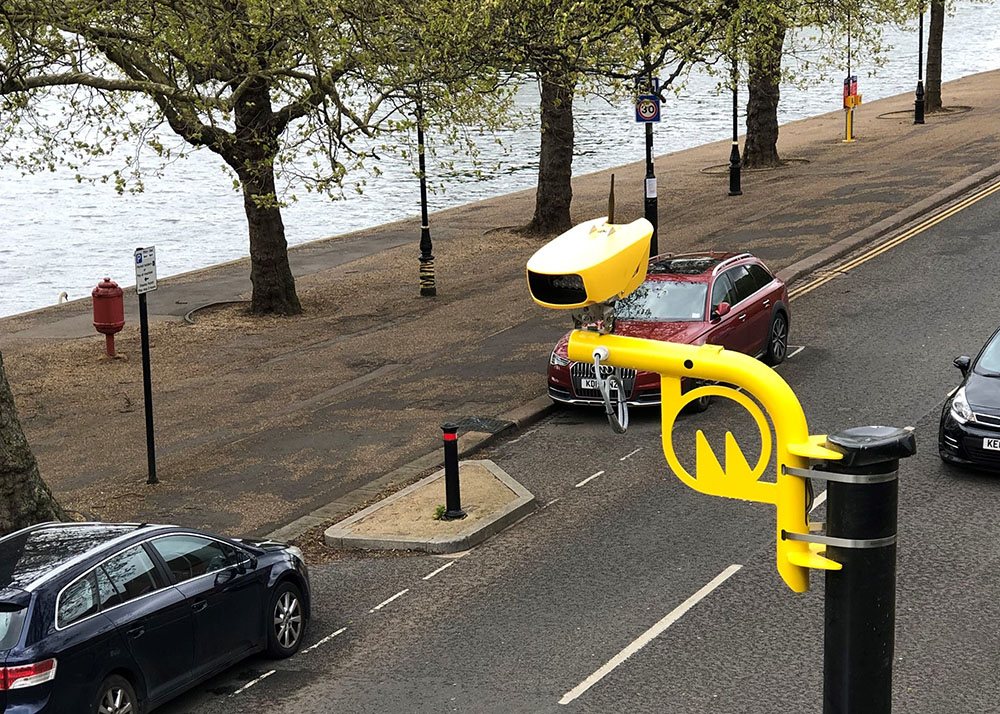
The logic seems unassailable: a vehicle travelling at a lower speed should result in fewer deaths or serious injuries when it strikes a pedestrian or cyclist. But does the evidence exist to back this up?
Statistics from the European Commission’s DG Move mobility and transport department show that when a car strikes a pedestrian at 30mph (48km/h), there is a 45% probability of killing them. If the vehicle is travelling at 20mph (32km/h), that fatality rate drops dramatically to 5%. The UK’s Royal Society for the Prevention of Accidents (RoSPA) cites similar figures.
With this in mind, many organisations have for some years called on their respective governments to cut urban speed limits to 20mph. This call has become more urgent in recent months with the coronavirus pandemic
For instance, some UK doctors have called for a 20mph urban limit and a 50mph national limit – their logic is that this will reduce road casualties and thus reduce the already considerable pressure on the UK’s National Health Service caused by Covid-19.

A blog on the British Medical Journal website noted: “In England alone there are around 35,000 non-fatal admissions to hospital every year related to road traffic accidents; more than one in 10 of these are serious and likely to require intensive support, including anaesthesia and surgery.”
International evidence
It suggested that evidence from around the world shows that lowering speed limits can lead to major reductions in injuries: “In Canada, for example, lowering the speed limit from 40km/h to 30km/h was associated with a 28% decrease in pedestrian-motor vehicle collisions and a 67% decrease in major and fatal injuries.”
Canada has, indeed, trialled lower urban speed limits in Toronto and Edmonton.
One study, by BMC Public Health, looked at the effect of lowering the speed limit from 40km/h to 30km/h on local roads in Toronto between January 2015 and December 2016 and checking that against a comparator group of streets whose speed limit remained at 40km/h.
However, although the study found that the speed limit reduction was associated with a 28% decrease in the number of collisions between vehicles and pedestrians in the Toronto project, it concluded that “this effect was not statistically greater than reductions on comparator streets”.
Similarly, a study of the 2011 introduction of 20mph speed limits in a series of districts throughout New York City found that casualties dropped by almost 9% - but these streets were not compared to other areas where the speed limits remained unchanged.
And since then, comparisons of traffic injuries between several areas where lower limits were introduced and neighbouring ‘control’ areas have been inconclusive.
Yet a later study of 26 ‘neighbourhood slow zones’ in New York said the reductions in incidents “appeared to be an effective and cost-effective means of reducing road casualties”.
Significant reductions?
In Edmonton, Canada, a 2011 report on a pilot project to reduce speeds from 50km/h to 40km/h in six residential communities found that traffic speeds certainly fell during the project’s 2006-10 duration, as did the number of serious injuries or fatalities.
However, it concluded: “These reductions were not significant. Consequently, the results of the collision analysis were inconclusive and additional research will be required to substantiate the impact of the pilot project on the number and frequency of collisions.”
More striking was a 2018 study from Edmonton, which found a 45% reduction in fatal and severe injury collisions when speed limits were reduced from 50km/h to 30km/h in school zones. Injuries to vulnerable road users, such as pedestrians and cyclists, were reduced by 55%.
In Europe, 30km/h schemes have been widely used in countries such as Denmark, Germany, Netherlands and Sweden for the past 30 years.
Graz in Austria introduced a 30km/h trial from 1992-94 that covered most of the city. A 1995 study looked at ‘before and after’ analysis of traffic speeds and identified relatively small reductions in average traffic speeds but a 24% reduction in serious injuries as a result of collisions.
A 2010 study on the project looked at a wider comparison period – five years before and after the introduction of the 30km/h limit. Accident numbers reduced, then plateaued until 1996, but then started to rise again and fluctuated at that higher level (although still lower than the pre-trial period). No conclusions for the return to higher accident levels were drawn.
Important distinction
Dr Shaun Helman, chief scientist at the UK’s Transport Research Laboratory, concurs that, in principle, reducing vehicle speed is a recipe for reducing fatalities and serious injuries.
However, he noted, there is an important distinction between a 20mph zone and an area with a 20mph limit. The former includes supporting infrastructure, such as speed bumps, raised areas and chicanes to slow traffic, while a 20mph limit is exactly that – speed limit signs only.

A meta-analysis in 2019 looking at the difference between 20mph zones and limits confirmed this, Helman told ITS International. “I think 20mph zones are good at reducing collisions, because they reduce speed. On limits, I think the evidence is more patchy. But that doesn’t mean they shouldn’t work. It means that if you’re going to implement it, you have to find a way to get people to buy into it, see it as legitimate and respond accordingly.”
He added that multiple factors lay behind accidents. Changing one of those factors – in this case, speed – would have an impact, but would not necessarily stop accidents happening: “There are always exceptions – some people who are hit at 20mph will die, and that’s tragic.”
But he confirmed: “People in road safety are generally agreed that if you can get traffic speed down, we do see benefits.”
Residents in areas where a 20mph zone is introduced generally supported them, he added, as they improved the quality of life and allowed people to enjoy their surroundings more, especially if cycling or walking.
Future improvement
The urban accident situation is likely to improve in the near future, with European Union regulations introducing ‘intelligent speed adaptation’ on all new cars sold in the bloc from 2022.
Under this system, a car will know what the speed limit is for the area in which it is travelling and automatically keep to it. The UK seems likely to follow this initiative. Drivers will be able to override the system by pressing the accelerator and so it will not curb habitual speeders, but it will help to reinforce adherence to the speed limit by the majority of law-abiding motorists.
There seems little doubt that there is a widespread desire for lower speed limits in urban areas and this seems to be the direction of travel for policymakers and local government bodies, especially as the need for ‘green’ measures becomes steadily stronger.
This was seen in the Stockholm Declaration, announced in February after officials from around the world gathered in the Swedish capital for the Third Global Ministerial Conference on Road Safety.
The declaration aims to cut traffic deaths by 50% by 2030, by introducing a 30 km/h speed limit in all residential areas in 140 countries. It also aims to “speed up the shift toward safer, cleaner, more energy-efficient and affordable modes of transport and promote higher levels of physical activity such as walking and cycling as well as integrating these modes with the use of public transport to achieve sustainability”.
The conference produced a list of 18 resolutions that linked road safety to sustainable development – and the 80 ministers and 1,700 experts agreed that 30 km/h should become the standard in all places where cars, cyclists, and pedestrians co-exist.
However, actually creating those areas will require translating those sentiments into action. That will require not only political will but capital expenditure in physical traffic calming measures to ensure that a 20mph limit is actually enforced on motorists.
Simply putting up 20mph signs and hoping for the best seemingly will not do the job.
ABOUT THE AUTHOR:
Alan Dron is a freelance journalist with many years working in the transport sector, including ITS and aviation












